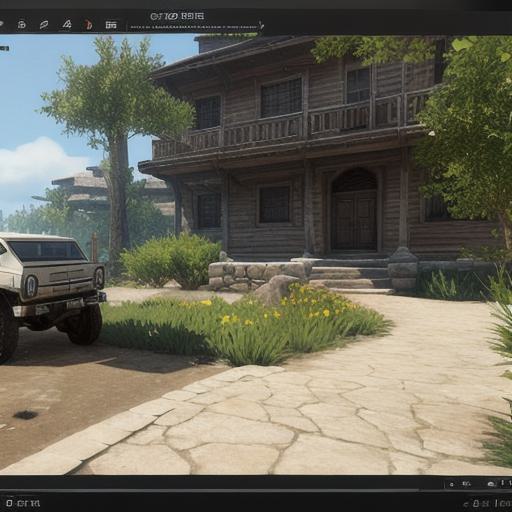Introduction
Video game development is a complex and ever-evolving field that requires a combination of technical, artistic, and creative skills. The process of creating a video game involves several stages, from conceptualization to testing, and it can take years to complete. In order to create an immersive and engaging game experience, game developers rely on various tools and software programs that help them streamline their workflow and achieve the desired results.

In this comprehensive guide, we will explore the most commonly used video game development tools and platforms, including 3D modeling software, game engines, scripting languages, and testing tools. We will also delve into the various factors that influence the choice of these tools, such as the type of game being developed, the target audience, and the budget available to the developer.
Understanding the Stages of Video Game Development
Before we dive into the specific tools and software programs used in video game development, it is important to understand the various stages involved in creating a video game. The following are the main stages of video game development:
- Conceptualization: This stage involves brainstorming ideas for the game, defining the concept, and developing a prototype.
- Design: In this stage, the game mechanics and rules are defined, character and object models are created, and the game world is designed.
- Development: This stage involves programming the game, implementing the game logic, and integrating all the different elements of the game.
- Testing: In this stage, the game is tested for bugs and other issues, and various types of testing are performed to ensure that the game is functioning as intended.
- Deployment: This stage involves releasing the game on various platforms, such as PCs, consoles, or mobile devices.
-
Maintenance: Finally, the game must be maintained and updated regularly to fix bugs and add new content.
Choosing the Right Tools for Your Game Development Project
Now that we have an understanding of the different stages involved in video game development, let’s explore the tools and software programs commonly used by game developers. The choice of these tools depends on several factors, such as the type of game being developed, the target audience, the budget available to the developer, and their level of experience.
3D Modeling Software
3D modeling software is an essential tool for creating characters, objects, and environments in a video game. The following are some of the most commonly used 3D modeling software programs:
Blender
Blender is a free and open-source 3D modeling software that is widely used by game developers. It offers a wide range of features, including sculpting, rigging, animation, and rendering.
Blender
has a steep learning curve, but once you master it, you can create high-quality 3D models quickly.
Maya
Maya is a proprietary 3D modeling software that is commonly used in the film and game industries. It offers advanced features such as animation, particle systems, and scripting.
Maya
is expensive and requires specialized training to use effectively.
ZBrush
ZBrush is another powerful 3D modeling software that is used for creating high-quality characters and objects. It offers advanced sculpting tools that allow you to create intricate details and textures quickly. ZBrush is also expensive, but it has a relatively small learning curve compared to
Maya
.
AutoCAD
AutoCAD is a 2D drafting software that is often used for creating concept art and level designs in video games. It offers advanced features such as parametric modeling and 3D visualization. AutoCAD is widely used in the game industry, but it is not suitable for creating 3D models.
Game Engines
Game engines are software platforms that provide a set of tools and resources for developing video games. They include everything from scripting languages to physics engines and rendering systems. The following are some of the most commonly used game engines:
Unity
Unity is a cross-platform game engine that supports various programming languages, including C, JavaScript, and Boo. It offers a wide range of features, such as 2D and 3D graphics, physics, animation, and networking.
Unity
is free to use for personal projects but requires a paid subscription for commercial projects.
Unreal Engine
Unreal Engine is another popular game engine that supports C++ and Blueprints scripting languages. It offers advanced features such as real-time rendering, motion capture, and virtual reality support.
Unreal Engine
is free to use for personal projects but requires a paid subscription for commercial projects.
Construct 3
Construct 3 is a visual programming platform that allows you to create games without writing any code. It includes a drag-and-drop interface and offers a wide range of features, such as physics, animations, and networking. Construct 3 is free to use for personal projects but requires a paid subscription for commercial projects.
Scripting Languages
Scripting languages are used to write game logic and control the behavior of objects in a video game. The following are some of the most commonly used scripting languages:
C
C is a programming language that is commonly used in game development, especially for
Unity
games. It is an object-oriented language that offers advanced features such as garbage collection and type safety.
JavaScript
JavaScript is another popular scripting language that is widely used in web development and game development, especially for
Unity
games. It is a prototype-based language that offers dynamic typing and is easy to learn.
Python
Python is a high-level programming language that is commonly used for game logic and AI. It offers advanced features such as object-oriented programming, functional programming, and machine learning.
Testing Tools
Testing tools are used to ensure that the video game is functioning correctly and to identify and fix any issues before it is released. The following are some of the most commonly used testing tools:
JIRA

JIRA is a project management tool that is widely used in software development, including game development. It offers features such as task tracking, issue tracking, and agile planning.
Bugsnag
Bugsnag is a crash reporting and analytics platform that helps game developers identify and fix issues quickly. It offers features such as error tracking, user profiling, and performance monitoring.
Google Analytics
Google Analytics is a web analytics service that is commonly used to track the performance of video games. It offers features such as user acquisition, engagement, and retention tracking.
Choosing the Right Game Engine for Your Project
Choosing the right game engine is an important decision in video game development. The choice of game engine depends on several factors, including the type of game being developed, the target audience, and the budget available to the developer.
Unity is a popular game engine that is widely used for 2D and 3D games across various platforms. It offers a wide range of features and tools, including scripting languages, physics engines, and rendering systems.
Unity
is also free to use for personal projects, making it an attractive option for beginners and small-scale developers.
Unreal Engine is another popular game engine that is known for its high-performance graphics and advanced features such as real-time rendering, motion capture, and virtual reality support. It offers a wide range of scripting languages and tools, including C++, Blueprints, and the Epic Games Launcher.
Unreal Engine
requires a paid subscription for commercial projects, making it less attractive for beginners and small-scale developers.
Construct 3 is a visual programming platform that allows you to create games without writing any code. It offers a wide range of features and tools, including physics, animations, and networking. Construct 3 is free to use for personal projects but requires a paid subscription for commercial projects, making it an attractive option for small-scale developers.
Conclusion
In conclusion, video game development requires a combination of artistic skills, technical expertise, and project management skills. The tools and resources used in video game development include 3D modeling software, game engines, scripting languages, and testing tools. Choosing the right tools and resources depends on several factors, including the type of game being developed, the target audience, and the budget available to the developer. By using the right tools and resources, developers can create high-quality video games that engage and entertain players across various platforms.



